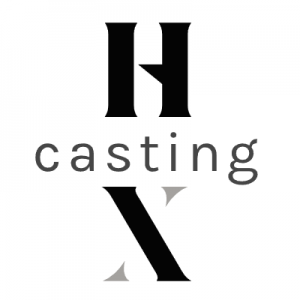Gravity die casting technology: Principle, application
Date: 2024-10-29 Categories: Blog Views: 3361

What is gravity casting?
Gravitational castingRefers to the molten metal liquid, under the action of gravity from top to bottom flow, and flow filled with the specified model cavity, cooling solidification molding process. This process is called gravity casting. Some places also called it gravity die casting. Compared withHigh Pressure Die CastingThe flow is much slower and the process is simple. It is less prone to porosity. And can be used in a wider range of metals.
The process of casting:Liquid metal → filling → solidification and shrinkage → casting
Common types of gravity cast metals:
- Cast Iron Gravity Casting
- aluminumGravitational casting
- Zinc alloy gravity casting
- Copper alloy gravity casting
Gravity Casting Category.
More different types of molds: can be divided into sand core gravity casting, metal type gravity casting, disappearing mold gravity casting.
Sand core gravity casting
Sand core gravity casting, refers to the mold made of coated sand, the more coated sand can be divided into different
- dry sand
- wet sand
- Chemically bonded
Metal type gravity casting
Metal casting refers to the mold made of steel (ductile cast iron, hot formed steel), metal type gravity die casting relative to the sand core casting has a better product appearance surface, more accurate product size, more beautiful appearance.
More pouring way of different metal type gravity casting can be divided into tilt gravity casting and vertical gravity casting
tilt gravityDie casting
Tilt gravity casting, refers to the mold placed horizontally or at a certain angle, under the action of gravity machine slowly rotating gradually vertical, the process of aluminum from tilt to vertical through the action of gravity aluminum filled with the mold interior of the process is called tilt gravity casting.
Tilt Gravity Die Casting Features: Tilting gravity casting reduces the possibility of air holding in the product by slowly turning vertical by tilting, which facilitates the discharge of air from the liquid metal. This reduces the possibility of defects in the product. Tilting gravity casting adopts machine operation and facilitates automated production.
Vertical Gravity Die Casting
Vertical gravity casting is also known as vertical gravity casting, the molten metal is injected into the mold from top to bottom under the action of gravity to fill the entire mold, is a more traditional gravity cast (pour metal into a mold) Modalities.
Vertical casting features: lower mold costs, fast production efficiency, due to the vertical drop design is not reasonable and easy to produce the volume of gas and other issues.
Gravity Casting Advantages and Disadvantages
Gravity Casting Advantages:
- 1、Aluminum castings have fewer internal pores and can be heat-treated.
- 2、Lower cost of molds and long service life of molds.
- 3、Simple process, suitable for high-volume operation.
- 4. Low flowability special aluminum alloy can be used.
- 5. The material is widely used.
Gravity casting disadvantages:
- 1, the product surface finish is not high, easy to produce pits after blasting.
- 2. Low productivity, thus increasing production costs.
- 3, the process is relatively simple, not suitable for the production of thin-walled parts.
Gravity Casting Applications.
Ningbo Hersin is an aluminum casting factory that specializes in giving customers one-stop solutions for aluminum casting. Ningbo Huxin gravity casting offers a wide range of services, specifically including but not limited to the following areas:

Try HeXin now!
- AutomotiveAluminum gravity die casting in automotive applications are more common, such as automotive air conditioning compressor scroll disk, automotive chassis support frame, due to the gravity die casting products relative to high-pressure die casting is relatively thicker, higher strength, applied to structural components, and small batch automotive parts product development.
- rapid transit: In the field of rail transportation, aluminum alloy gravity casting parts also play an important role. They are used in the manufacture of various rail transportation equipment parts, such as the structural parts of rail vehicles, connectors and so on.
- shipbuilding: In shipbuilding, aluminum alloy gravity casting parts also have a wide range of applications. They are used to manufacture structural parts, decks, bulkheads and other key parts of ships.
- Mechanical person: With the continuous development of robotics, aluminum alloy gravity casting parts have been widely used in robot manufacturing. They are used in the manufacture of structural parts, joints and other key parts of robots.
- Other industrial areas: In addition to the above fields, aluminum alloy gravity casting parts are also widely used in gas pipelines, heavy equipment, distribution boxes and many other industrial fields.
Frequently Asked Questions (FAQs)
Are there no holes in gravity casting??
Yes, compared to high-pressure die casting for gravity casting is the role of gravity molding products, his flow rate is relatively slow, not easy to produce air holes, but the wrong mold design and product feeding methods, will make the product hold the surface of the air contraction (product surface sunken into the), make up for the shrinkage is not enough (internal processing of the product appears to be air holes, pinholes, the surface of the product sunken into the)
Can gravity casting be mass produced?
Yes, metal-type gravity casting, the use of ball-milled cast iron, heat-resistant steel made into molds, more material mold life from thousands of molds to tens of thousands of molds ranging from the life of the longer, the speed of the mold is not as good as high-pressure die casting, but the production efficiency is not too low, the special structure through the increase in the number of molds to increase the number of molds in the case of 1 die hole (a number of the same product) can also be compared to the production of a single mold of high-pressure die casting.
Can gravity casting be considered permanent mold casting?
Yes, permanent mold casting refers to casting in which the mold can be reused. Metal-type gravity casting in which the mold can be reused without damaging the mold (without reaching the life expectancy of the mold) is also considered to be permanent mold casting.
Are gravity die casting products better than high pressure die casting products?
Not necessarily, through the production of gravity casting products more thick, and high pressure casting products more lightweight. If a certain thickness of the product (general thickness of 5mm or more), the use of their respective suitable process of aluminum, gravity die casting after T6 heat treatment strength is much higher than the high-pressure die casting (die casting commonly used adc12 generally can not be heat-treated), but in the absence of a certain thickness of the product (for example: 50cmx50cmx50cm product is only 3mm thick), gravity casting is unable to casting molding. (The gravity pressure is small and easy to cast molding. (Gravity role pressure is small easy product under casting to play not full) and, but from the appearance, no matter how thick the product high pressure die casting product surface roughness is far lower than gravity casting, that is, the surface is more smooth.
Hersin has high-pressure die casting, low-pressure die casting, gravity die casting and other processes, more than 20 years of manufacturing experience, complete production system, through more Hersin engineers contact, can provide the process to meet your needs, to ensure that the project runs perfectly.

























